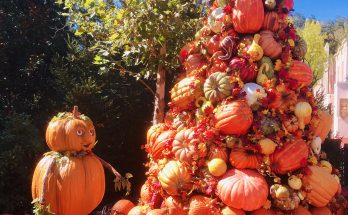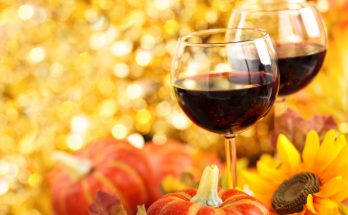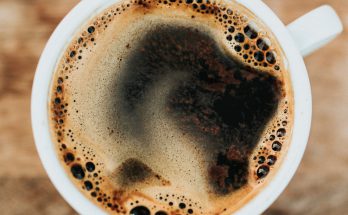If you don’t know blanching from braising, then you’ve come to the right place. Even the finest of foodies sometimes struggle with the new vocabulary required for finessing French recipes. Here’s a quick cheat sheet to guide you through the directions of the latest dishes you’ve been wanting to make:
Basic Cooking Methods
According to Eugen Pauli, author of the European culinary reference, Classical Cooking the Modern Way, the basic cooking methods include baking, blanching, boiling, braising, (deep-fat) frying, glazing, gratinating, grilling (or broiling), poaching, pot roasting, roasting, sautéing, steaming, and stewing. So let’s see what each one is about.
Baking – Cuire au Four
Baking is using dry heat in an oven. In theory, baking cooks something equally throughout, though heat has a harder time getting to the middle of deep-dish cakes (which is why cake pros will place a round metal (heat-conducting) mold in the middle of a large or deep cake pan to improve heat distribution throughout the pan.
Blanching — Blanchir
To blanche a vegetable or meat is to submerge it in hot water for one to two minutes, just long enough to apply heat to the surface without wilting or thoroughly boiling the vegetable or meat. Dunking vegetables in a bowl of ice water arrests the effect of the heat and helps the vegetables retain their color. No more lackluster veggies!
Boiling — Bouillir vs. Poaching — Pocher vs. Stewing — Mijoter
Water boils at 212 ̊F (100 ̊C), but it begins showing bubbles at 194 ̊F (90 ̊C), the moment at which you can poach something like an egg, fish, or delicate organ meat like sweetbreads. Submerge the food in the bubbling water for a duration of one to several minutes to poach, and remove with a slotted spoon.
Boiling can last several minutes (on a high temperature, this is called a fast or rolling boil) or several hours, which is called stewing, simmering, or a gentle or low boil. Boiling meats and vegetables fades their color and makes them softer in texture. Some meats, such as those from the front end of animals and the legs or shanks, as well as “oxtail,” require several hours of stewing to become tender.
Braising — Braiser
Braising is a two-step process. Step One: meat is “browned” on all sides (in fat), whether it’s one large piece or it’s cut into cubes. The browning contributes to the flavors and aromas of the meat.
Tip: To keep meat from burning in the browning process, I use tallow, lard or duck fat (from pasture-raised animals), which have high smoke points and can take the heat but also add flavors and nutrients to the dish.
Step Two: Partially cover the meat with water, wine, or stock (or sometimes extra fat), and cover the pot, allowing the meat to stew slowly for several hours. This creates tender meat, breaking down the collagenous fascia and muscle. It’s what “slow cookers” do for you: low and slow.
Tip: Use an iron pot with a lid, also known as a Dutch oven, or cocotte, to brown and then simmer the meat. The result is a savory meal of tender meat in which the heat is evenly distributed and the pot does all the work. Braising is one of the great secrets to French traditional cooking. Some of my favorite recipes (stews and pot roasts) are made by braising meat.
Frying — Friture
Frying is cooking over high heat with a large amount of fat (deep-fat frying) and for a longer duration than a short sear or a sauté.
Glazing — Glacer vs. Deglazing — Déglacer
Glazing is applying a savory or sweet glaze on top of a food by dipping, drizzling, or using a brush.
Much more useful to understand is deglazing, which is done by pouring liquid (water, wine, or stock) into a pan in which vegetables or meat have been caramelized to unstick the remaining food stuck to the pan.
This becomes a sauce (jus) to pour over your meat, fish, or vegetable. According to Julia Child, deglazing is one of the main secrets of French cooking because of the resulting flavors this jus produces. The process of deglazing also makes your pan easier to clean!
Gratinating — Gratiner
To gratinate is to bake a vegetable or other food in the oven with the effect of cooking the inside of the food while browning the outside and turning it a bit crispy on top.
Tip: Try melting some gruyère cheese over some boiled potatoes for a few minutes – making a gratin can be as simple as that.
Grilling — Griller vs. Broiling — Gril au Four
Both grilling and broilling use one-directional heat, as in grilling over a fire or broiling just under the heat source in an oven.
Grilling is a kind of dry cooking of meat, fish, or vegetable by searing it at a high temperature without additional fat, though often people will slather meat, like a drumstick, with BBQ sauce for flavor and fat. Grilling chars and/or lends a smoky flavor to food.
Broiling a slab of salmon or a steak in the oven heats the surface, and steaks are usually flipped when broiled, to broil both sides while keeping the middle rare.
Pot Roasting — Poêler
A large cut of meat that is cooked (essentially steamed) with aromatic garnishes (such as bay leaves, onions, carrot, celery and thyme) at a medium or low temperature in a cast iron pot and covered with a lid, then uncovered so the skin can dry and become crispy such as for a whole chicken or fish.
Poêler is a French invention, meant to maintain flavor and moisture inside and add a brown, crispy crust on the outside.
Roasting — Rôtir
Cooking meat uncovered at temperatures between about 355 ̊F and 465 ̊F (180 ̊C and 240 ̊C) to form a crust on the outside while keeping the meat tender and juicy on the inside. Roasting can be done with little or no additional fat.
For my beef, lamb, chicken, and pork roasts, I often add olive oil or butter for its flavor and protective effect.
Sautéing — Sauter
Sauter is the verb meaning “to jump” in French. In cooking, it can mean to fry, cook, or brown in fat, depending on the context, but not to burn or char, in an uncovered pan on medium-high to high heat.
This process browns the meat or vegetables, adding to both flavor and texture. I generally reduce the heat to prevent burning and allow the meat or vegetable to cook through for at least a few minutes after the initial browning.
Steaming — Cuire À La Vapeur
Steaming cooks vegetables or fish in steam from boiling water. This cooking method became popular with the “nouvelle cuisine” of the late 1960s. It is a “fat-free” way of cooking, but it usually requires bathing a steamed vegetable in butter, olive oil, or other fat to bring out the flavor (as well to be able to absorb the vegetable’s fat-soluble nutrients.) To me, steaming does the least for food in terms of flavor or nutrients. I prefer a sauté or pan-fry for more flavor, and a few pinches of sea salt.
So now that you are equipped with some classic cooking methods, my challenge to you is to put your knowledge to practice.
Find a roast and roast it, try braising a nutrient-dense hunk of meat (preferably from a farm that raises animals on pasture, as they were meant to), and fry up some asparagus, potatoes, or zucchini in duck fat!



